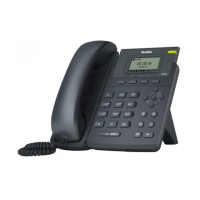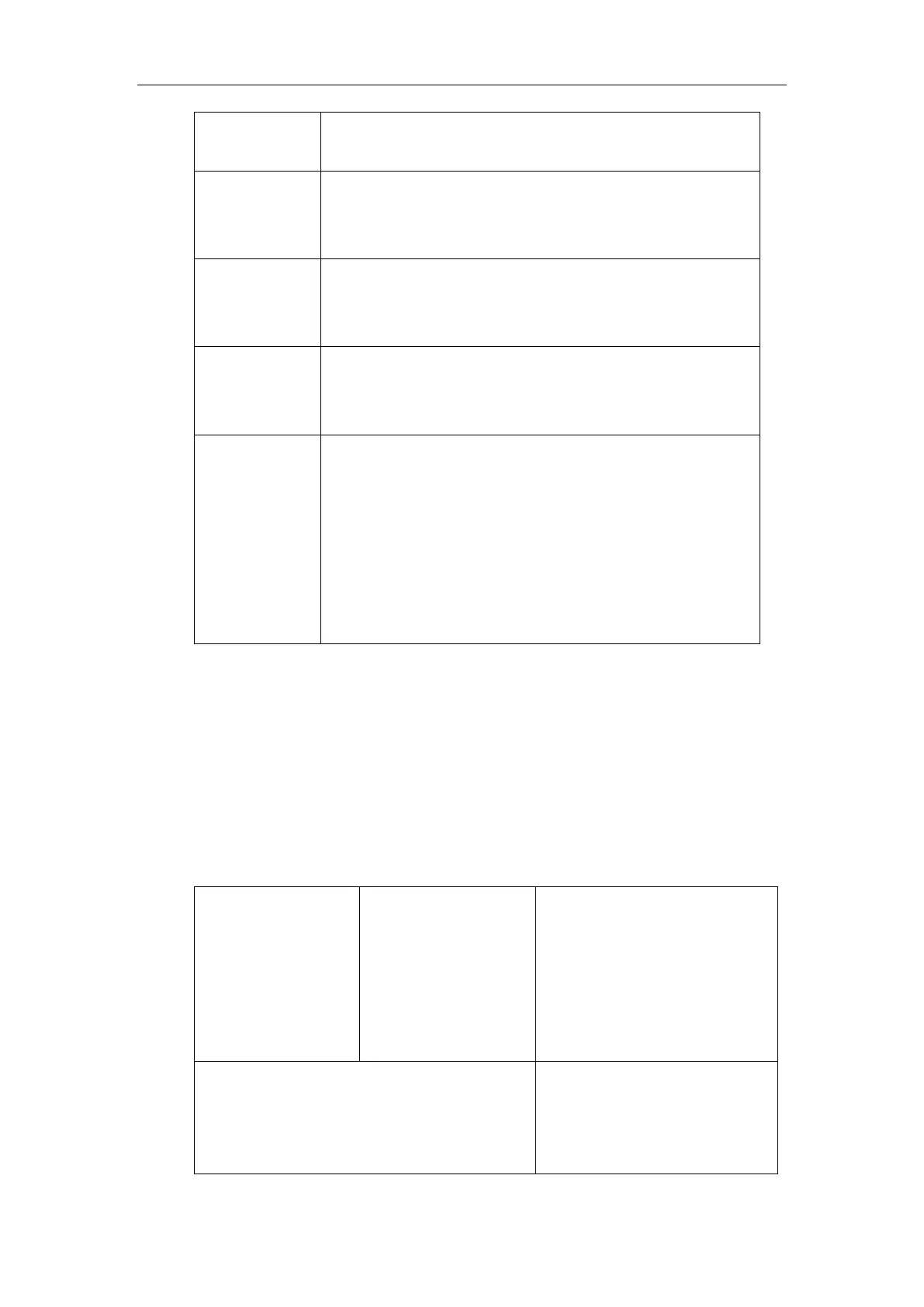Configuring Basic Features
277
brackets. Example:
“[5-7]” would match the number “5”, ”6” or ”7”.
The comma “,” can be used as a separator within the bracket.
Example:
“[2,5,8]” would match the number ”2”, “5” or “8”.
The square bracket "[]" can be used as a placeholder for a single
character which matches any of a set of characters. Example:
"91[5-7]1234"would match “9151234”, “9161234”, “9171234”.
The parenthesis "( )" can be used to group together patterns, for
instance, to logically combine two or more patterns. Example:
"([1-9])([2-7])3" would match “923”, “153”, “673”, etc.
The “$” followed by the sequence number of a parenthesis means
the characters placed in the parenthesis. The sequence number
stands for the corresponding parenthesis. Example:
A replace rule configuration, Prefix: "001(xxx)45(xx)", Replace:
"9001$145$2". When you dial out "0012354599" on your phone, the
IP phone will replace the number with "90012354599". “$1” means 3
digits in the first parenthesis, that is, “235”. “$2” means 2 digits in the
second parenthesis, that is, “99”.
Replace Rule
Replace rule is an alternative string that replaces the numbers entered by the user. IP phones
support up to 100 replace rules, which can be created either one by one or in batch using a
replace rule template. For more information on how to customize a replace rule template, refer
to Customizing Replace Rule Template File on page 280.
Procedure
Replace rule can be created using the following methods.
Central Provisioning
(Configuration File)
Create the replace rule for the IP
phone.
Parameters:
dialplan.replace.prefix.X
dialplan.replace.replace.X
dialplan.replace.line_id.X
Create the replace rule for the IP
phone.
Navigate to:
http://<phoneIPAddress>/servlet?p

